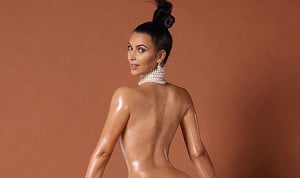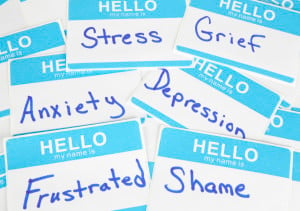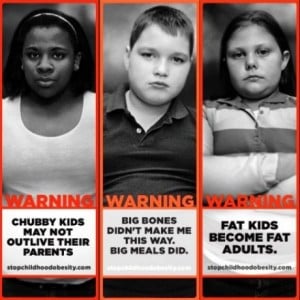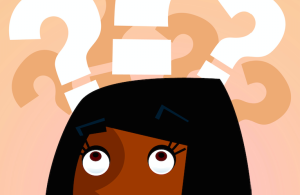
Source: Luma Coaching
As many of us do every year around this time, I got some invites to attend Pride Parades, wear my “gayest outfit” for bar/club crawls, and just “come out and celebrate!”
I couldn’t put my finger on it, but somehow I was not motivated to go. Perhaps it was because every time I opened my closet, the “gayest outfit” did not magically appear.
Or perhaps it was something else.
Earlier this month, more articulate people got on Twitter and began trending #notproud. The hashtag is definitely sensational (#NOTproud? How dare you?), but it brings up an important point:
What is the meaning behind Pride? And when we celebrate, how are we representing the movement and its struggle?
To be clear, I’ll be the first to say that yes, we have plenty to celebrate.
The 2000s brought debate around marriage equality as individual states (and our president) recognized marriage as a right for all.
In 2011, Congress repealed “Don’t Ask, Don’t Tell,” which ushered in the appropriate training and education needed for people to serve openly in the military, regardless of their sexual orientation.
Last year, the Employment Non-Discrimination Act (ENDA), a bill which will ban discrimination against gay and trans* workers, passed in the Senate and now awaits voting in the House.
And in 2013, the Supreme Court overturned the Defense Against Marriage Act (DOMA), ruling that equality is way cooler than prejudice.
All of this is awesome.
I am not against pride events or the overwhelming feeling of pride. (I teared up just writing that last paragraph. I love me some pride!) Pride brings people together and makes a social issue visible and alive en masse!
But it’s exactly the “en masse” part that I want to dissect in regards to how social movements generally function and grow.
Geena Davis wrote an interesting article where she offers “Two Easy Steps to Making Hollywood Less Sexist.”
The first is obviously to add more female characters. But the second step has stuck with me: Rewrite crowd scenes to include women.
And that’s my problem with some of these pride/celebration/heritage months: Just like how women get lost in the crowd, so do diversity issues.
This means that when we talk about the women’s movement, we often leave out women of color and working class women’s issues. When we talk about Asian Pacific Islander issues, we often leave out South Asians, immigration issues, and queer people of color.
At LGBTQIA+ panels, the G’s show up in overwhelming numbers and the critical L, B, T, and Q issues are tackled during question and answer time.
And pride should be about including diversity, not letting the unique and different get lost in the crowd.
But how do we rewrite the crowd scene when, often times, we only control the personal narratives?
To elaborate, my brother had his top surgery done at the end of May (yay!), which means he started the month of June (Pride Month) presenting a more masculine identity that he aligns with. He waited for that operation for a very long time. It took a lot of mental and financial preparation to get to that point. This was a big deal.
And this personal link should have made me feel more connected to Pride Month. I felt obligated to celebrate and feel super proud of this great moment, but why not?
Because the quality of his life will improve after this surgery, yes, but in no way does this mean his transition is “done.” No, his transition (this term already laden with assumptions that the change from one gender identity to another means a certain finality) is far from done.
He still needs to take hormones for the rest of his life; battle cisgender assumptions when meeting new friends, employers, and potential partners; worry about bathroom behavior expectations as a man not using the urinals; changing identification cards; health insurance claims that will be atypical for a “normal man”; representing the trans* community while also living the life of a man; and on and on.
This is reality.
And yet, movements are generally presented as linear trajectories: There is the marginalized community, fight for some legal rights, struggle and more struggle, tear-jerker videos and testimonies, a few heroes and role models that we look up to as we continue the fight, sweet, sweet victory – and a month dedicated to celebration, pride, remembrance, and awareness.
And I’m having trouble feeling connected to that.
It’s not that I’m discounting the great strides we have made in marriage equality, women’s right to vote, health care coverage of transition surgeries, or recent TIME magazine cover achievements (to which I say YAY!), but rather, I feel that these milestones should not represent a movement’s success.
Because we need to think about the individuals. We need to remember what “pride” means.
Movements are more “queer” than we give them credit.
Movements are made up of different individuals with different struggles, and thus, different needs. With different struggles come different solutions and different trajectories to a point of celebration.
For instance, some women see the women’s movement as eliminating rape culture while others still see the need to reform equal pay for equal work. Some people may see the need to change adoption policies for same-sex couples, end workplace discrimination, or provide safer housing options for trans people rather than marriage equality (news flash: not everyone wants to get married!).
In the same way, not every member of the trans community identifies as either FTM or MTF to really revel in the trans community’s achievements. For those who identify as gender queer, success is being able to wear “pride colors” and “your gayest outfit” to express your truest identity every day and any day without being harassed or assaulted for not fitting into one of two boxes.
It’s complicated.
To use one of my brother’s phrases, “I’m not about to yuck on anyone’s yum.” That isn’t what this is about. It makes me very happy to see all the celebration all that we have achieved during Pride Month.
I am not #notproud.
But I know that what we have right now is simply #notenough for me to celebrate just yet. Pride Month is not about just rioting or just parading. No, Pride Month is about being just to all individuals. The true meaning of “pride” tells us that there are more individuals we need to bring into the movement.
[do_widget id=”text-101″]
Want to discuss this further? Visit our online forum and start a post!
Amy Sun is a Contributing Writer for Everyday Feminism. She has worked with providing resources and support for Asian/Pacific Islander survivors of domestic violence in the DC, Maryland, and Virginia areas. She also holds her Masters in Women’s Studies from the George Washington University, where she has researched the coming out processes for trans* who identify as FTM and MTF.
Search our 3000+ articles!
Read our articles about:
Our online racial justice training
Used by hundreds of universities, non-profits, and businesses.
Click to learn more




















